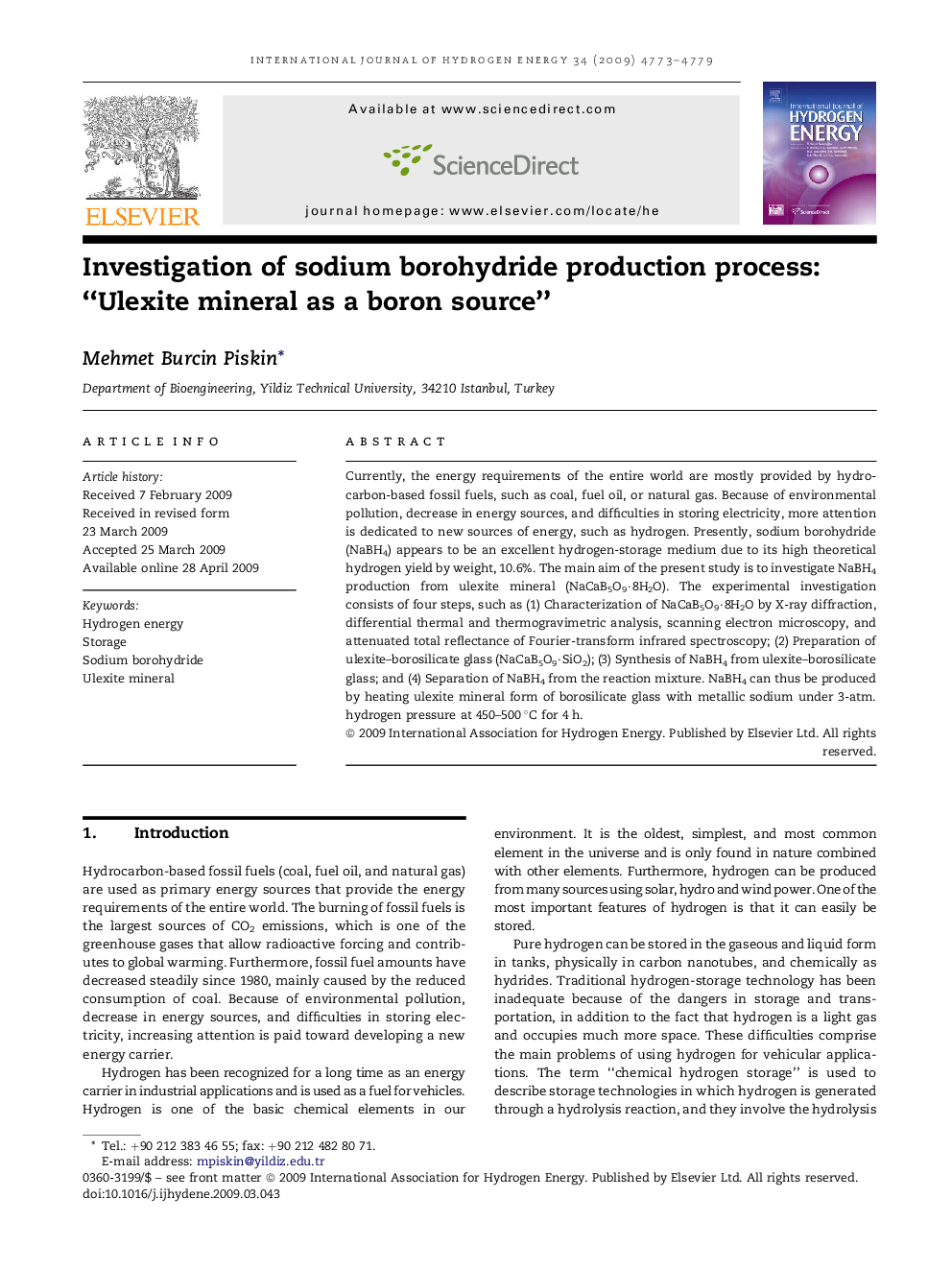| Article ID | Journal | Published Year | Pages | File Type |
|---|---|---|---|---|
| 1277860 | International Journal of Hydrogen Energy | 2009 | 7 Pages |
Currently, the energy requirements of the entire world are mostly provided by hydrocarbon-based fossil fuels, such as coal, fuel oil, or natural gas. Because of environmental pollution, decrease in energy sources, and difficulties in storing electricity, more attention is dedicated to new sources of energy, such as hydrogen. Presently, sodium borohydride (NaBH4) appears to be an excellent hydrogen-storage medium due to its high theoretical hydrogen yield by weight, 10.6%. The main aim of the present study is to investigate NaBH4 production from ulexite mineral (NaCaB5O9·8H2O). The experimental investigation consists of four steps, such as (1) Characterization of NaCaB5O9·8H2O by X-ray diffraction, differential thermal and thermogravimetric analysis, scanning electron microscopy, and attenuated total reflectance of Fourier-transform infrared spectroscopy; (2) Preparation of ulexite–borosilicate glass (NaCaB5O9·SiO2); (3) Synthesis of NaBH4 from ulexite–borosilicate glass; and (4) Separation of NaBH4 from the reaction mixture. NaBH4 can thus be produced by heating ulexite mineral form of borosilicate glass with metallic sodium under 3-atm. hydrogen pressure at 450–500 °C for 4 h.
